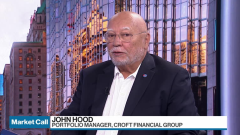Dec 20, 2023
Wall Street’s Bad Call on Mexican Super Peso May Finally Prosper
, Bloomberg News

(Bloomberg) -- After their bearish bets on Mexico’s peso were upended by what is set to be the biggest annual rally in at least a quarter of a century, many Wall Street banks are — once again — saying the currency’s winning run is over.
The peso has surged about 14% to 17.07 per dollar this year, the best performance in emerging markets after the Colombian peso. The rally has been supported by factors including high interest rates at home, strong remittances and the so-called nearshoring trend.
Morgan Stanley, which had expected the peso would finish this year at around 20.5 to the dollar, says the underperformance will be “a 2024 story” as rate cuts make it less attractive to investors funding bets with hard currency loans. Bank of America Corp. is also bearish, favoring the Brazilian real over the peso due to the likelihood of an aggressive easing cycle in Mexico during the second half of the year.
The peso’s “expensive valuations should finally start to correct” after a year in which it became “the darling of EMFX,” said Morgan Stanley strategist Ioana Zamfir. Presidential elections in the US and Mexico will boost volatility, she added, while a potential slowdown in the world’s largest economy will hit the Latin American nation harder.
“Next year all these factors are bound to create headwinds for the currency,” Zamfir said.
Claudia Sheinbaum, the candidate from President Andres Manuel Lopez Obrador’s party who holds a strong lead in polls ahead of the June vote, has yet to formulate her economic policy. But the US presidential race may prove an even bigger risk for the peso, which sank when Donald Trump first rose to power in 2016 — the former president now leads in the monthly tracking poll of all seven swing states for next year’s election.
Still, not everyone is pessimistic on the peso.
Hari Hariharan, the chief executive officer of New York-based hedge fund NWI Management, is neutral on the currency as he monitors the next steps from Mexico’s central bank. Policymakers raised their inflation forecast for 2024 last week and gave no hint they were ready to start lowering borrowing costs.
“We’re seeing this strident divergence where Mexico continues to sound hawkish,” said Hariharan. “You could see a remarkable appreciation pressure again.”
Others remain relatively bullish. JPMorgan Chase & Co.’s Anezka Christovova and Jefferies’s Brad Bechtel argue that favorable global trade patterns could leave the peso in overvalued territory even as the carry appeal diminishes.
“Even if we don’t get a massive easing cycle out of the Fed as some expect, you will still have great carry in EMFX,” said Bechtel, global head of foreign exchange at Jefferies in New York. He expects the peso will appreciate to 16.25 per US dollar by the end of the year.
The median forecast among analysts surveyed by Bloomberg is that the Mexican peso will weaken to 17.78 by the end of next year — about 4% lower than current levels. Some, like BofA, suggest betting the Brazilian real will gain against the peso, strategists including Ezequiel Aguirre wrote in a note earlier this month.
“Our core view that the bulk of MXN resilience has been largely driven by carry remains unchanged,” they said.
©2023 Bloomberg L.P.






